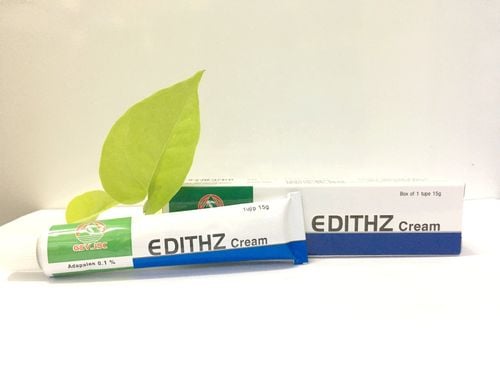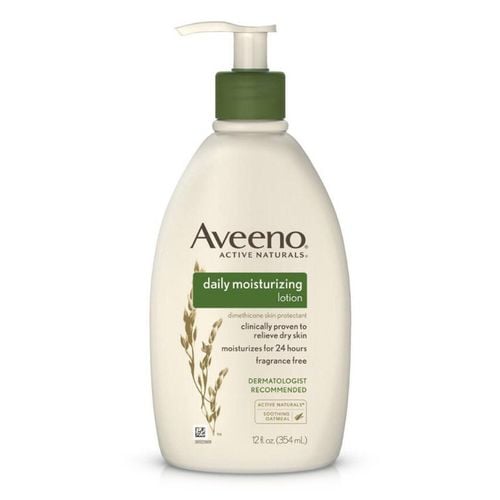This is an automatically translated article.
Exfoliation is a method of removing dead skin cells from the outer layers of the skin. This is a measure to help whiter skin, increase blood circulation and improve dry, dull skin. So how to safely and effectively exfoliate for each skin type?
1. Benefits of Exfoliating
Exfoliation is the removal of dead skin cells from the outer layers of the skin. This is a method that helps to improve dry or dull skin and offers many other benefits such as:
Removes dead skin cells Improves blood circulation Encourages skin changes, resulting in brighter white skin Better absorption of moisturizers and serums. There are many different methods for exfoliation. Depending on the skin type of each person, there are different methods and frequency of exfoliating. For example, some chemical exfoliants that may be stronger may be less intense. Usually, exfoliating the skin about 1-2 times a week is enough to bring about the effect of dry skin. In the case of oily skin may need more frequent exfoliation. Avoid over-exfoliating as it can lead to redness and irritation.
For certain skin conditions such as rosacea not recommended. In particular, you should stop exfoliating your skin if your skin becomes red, inflamed, flaky or irritated. Avoid exfoliating if you also use certain medications or products, acne medications, including retinol and benzoyl peroxide,...
2. Measures used for exfoliation
There are many different methods and tools to exfoliate the skin. In particular, facial scrubs and scrubs are a form of mechanical or physical exfoliation, and acids and peels are a form of chemical exfoliation.2.1 Physical Methods Mechanical or physical measures used in exfoliation include:
Exfoliating brush: usually a soft-bristled brush, used on the face or body to remove dead skin cells. Some are designed for dry brushing. Besides, there are types that can be used in conjunction with cleansers or shower gels. Exfoliating Sponge: A gentler way to exfoliate the skin. Foam can be created with an exfoliating sponge with warm water combined with a cleanser, soap or shower gel. Exfoliating gloves: if you find the brush or sponge difficult to grip, you can use gloves. When showering, lather with shower gel or soap. They can be effective for large areas of skin such as hands or feet. Massage: Using gentle, circular movements on the skin when exfoliating will help circulation better.

Phụ nữ có thể sử dụng phương pháp massage để tẩy da chết
Alpha-hydroxy acids: examples of alpha-hydroxy acids include glycolic, lactic, tartaric and citric acids. This product works by breaking the bonds that hold dead and dull skin cells to the surface of the skin. This will help remove dead skin cells naturally. Beta-hydroxy acid: Examples of beta-hydroxy acids include beta hydroxyl and salicylic acid commonly used for acne-prone skin.
3. How to safely exfoliate according to each skin type
When it comes to mechanical exfoliation, it's important to be gentle. You can make small circular motions with your fingers to exfoliate, or use an exfoliator of your choice. If you use a brush, make short, light strokes over the skin. Exfoliate for about 30 seconds and then rinse with warm water and not too hot or too cold. Avoid exfoliating if you have cuts, open wounds, or sunburn. Apply a moisturizer containing sunscreen ingredients after exfoliating.
3.1 Dry skin For dry or flaky skin, exfoliating is very important and necessary. However, it is not advisable to choose mechanical methods for exfoliation on dry skin. Because this process is drying out the skin and can lead to minor injuries. Alpha-hydroxy acids are effective for dry skin.
Glycolic acid products are recommended for healthy skin, it helps to remove dead cells from the surface of the skin and. Accordingly, you should apply sunscreen and moisturizer after using glycolic acid, to prevent skin from being easily damaged by the sun.
3.2 Sensitive Skin Sensitive skin conditions should not use mechanical exfoliation methods especially scrubbing too hard. Because it will aggravate the skin and can lead to redness. Use chemical exfoliants and follow with gentle massage movements, then wipe clean with a towel. For those with acne-prone skin, you can also try salicylic acid peels at specialized dermatology clinics.
3.3 Oily Skin Oily or thicker skin can use mechanical exfoliation. Oily skin conditions can have an extra layer of build-up on the surface, so manual exfoliation can be removed and highly effective. Gently massage, apply the exfoliant in circular motions for best results.

Thoa đều sản phẩm tẩy tế bào chết và massage nhẹ nhàng giúp tẩy tế bào da chết với da dầu
3.4 Normal Skin Skin condition is usually when there is no irritation, or abnormality, so you can choose any method of exfoliation. Chemical or mechanical exfoliation methods are safe for this skin type. You may need to experiment with different exfoliation methods to find the one that works best for your skin.
3.5 Combination Skin For combination skin conditions a combination of other methods may be necessary, including mechanical and chemical exfoliation. If your skin feels dry after exfoliating, use a moisturizer right after.
4. How to exfoliate by parts
Use caution when exfoliating sensitive areas of the body, including the face. Exfoliating sensitive areas too often can lead to complications like dryness, redness, and itchiness. Therefore, it is necessary to have appropriate exfoliating measures according to each part as follows:
4.1. Face The type of exfoliant to use on your face depends on your skin type. How to mechanically exfoliate your face with an exfoliating blend that includes:
Apply gently to skin with fingers. Rub in small, circular motions. Rinse with warm water. For chemical exfoliants in liquid form, apply with a cotton pad or washcloth. Work with a dermatologist to determine which exfoliants are safe for your skin.
4.2. Hands and Feet To exfoliate arms and legs, the most effective way is to use a brush, sponge or glove. This can help quickly remove dead skin cells and increase circulation.
You can use body scrubs purchased at your local pharmacy or on social media. When using, please foam in the shower. Alternatively, you can also try the dry brushing method.

Người dùng có thể sử dụng các loại sản phẩm tẩy da chết phù hợp với làn da của mình
4.3. Feet and Hands Exfoliating products for the feet and hands are available on the market today. You can also use shaved ice to exfoliate your feet, especially the heel area.
4.4. Pubic area Exfoliating the bikini area and pubic area can use a loofah or a body brush. Do this under a warm shower to soften your skin first, then gently scrub and rinse thoroughly afterwards.
In summary, exfoliating is a method to help remove dead cells on the skin, make the skin brighter, improve the condition of dry, dull skin. There are many methods of exfoliating such as chemical methods, physical mechanics, ... However, it depends on each skin type such as oily skin, dry skin, sensitive skin, ... and current skin condition. There will be different methods of exfoliation. Therefore, you can go to medical facilities specializing in dermatology for advice and choosing a safe method of exfoliation for yourself to bring the highest efficiency.
Please dial HOTLINE for more information or register for an appointment HERE. Download MyVinmec app to make appointments faster and to manage your bookings easily.
Reference source: healthline.com












